“Let food be thy medicine and medicine be thy food.”
One of the most frequent culinary questions posed to me is, “What can I do with tougher meat cuts, other than grind them?” The reason this is even a question, is due to the changes in cooking styles in response to newer technologies. With a range in every kitchen, and a gas grill on every back porch, our use of meat has been dumbed down to mostly grilled steaks and “brown the hamburger” sort of recipes. The braising of meat is a technique born of and earlier time. Before the advent of wood-burning, then electric and gas stoves, every home had a hearth. Here, a live fire was both the sole source of home heat, and the place all meals were prepared. Particularly for the peasantry, this sort of cooking persisted until surprisingly recently. Not coincidentally, many of the best dishes produced by this style involve the sort of cuts discarded by wealthier meat buyers. While the gentry paid a premium for the loins and legs of lamb, for instance, the shoulders and shanks were left to the poor.
Ironically, one of the finest dishes one can find in today’s top restaurants is Osso Buco. This dish is hard to pull off, on a menu. It takes a long time to cook, and isn’t the sort of thing one can toss on the grill, to order. Braised meat dishes require several hours at low temperatures. A dutch oven, hanging near a low fire, or nestled in glowing coals, yields a transformed feast, at the end of the day. Though those connective tissues around these joints seem tough and inedible on the raw cut, a long, moist, low-heat preparation renders them not only velvety and delicious, but medicinally nutritious. By coaxing the collagen out of the tendons and ligaments, we can have a dish that not only fills our bellies, but one that provides us with the nutrients that repair joints, strengthen hair and nails, and reduce pain and inflammation caused by degraded cartilage.
Another renowned braised meat dish is Coq au Vin. Literally, this translates as “Cock with Wine”. Often, when raising a laying flock of chickens, one finds oneself with an excess of roosters. Beyond the hardship of feeding animals that lay no eggs, too many roosters becomes a social problem in the flock. The biggest issue is that the roosters tend to line up and gang rape hens, to death. One good rooster, and perhaps a couple submissive others, is all a flock can handle. Once culled, the problem is that a rooster prepared like a broiler will be so tough, you’ll likely give up eating it, and just fill up on mashed potatoes. One can make stew with such birds, or truly elevate him by braising him all day in a whole bottle of red wine! Like the knuckley cuts from larger animals, the tougher the meat, the better the flavor.
In general, this technique involves browning the meat, then slowly cooking it with liquid, aromatic vegetables, and herbs. The default template is meat, stock, mirepoix, and a bouquet garni. Creativity can be applied by, say, braising uncured ham hocks in apple cider with cinnamon, onions, and thyme. As long as you have meat and some sort of moisture, and something flavorful, the technique will yeild something wonderful! As always, the better your ingredients, the better the result. If you’ve followed the method for making your own stock, outlined in my previous post, your already most of the way there. The rich braising liquid remaining in the pan is the perfect sauce to serve with your dish as is, or mounted with some butter. If you’re looking for more of a gravy sort of sauce, simply add some cooled roux to the simmering braising liquid. I will discus this approach further in future posts.
This recipe is for braised lamb shanks. One of my bros scored a whole trailer of Icelandic sheep on Craigslist, a while back, and asked for some help getting them in the freezer. For two days, we had Lambapoluza, over at Elk Run Farm. In the end, I brought home a fine lamb, and packed all four shanks together. Fortunately, I had some beef demi glace left over from my week-long stock making endeavor. This, combined with some Cabernet, made a superlative braising liquid. Mash potatoes are the perfect side dish for something like this, as the sauce uses them as a vehicle. I used a cast iron dutch oven (amazon link below) for this, but a slow-cooker set to low will work, as well. I encourage you to give this approach a try. You can save on meat, and totally impress friends and family!
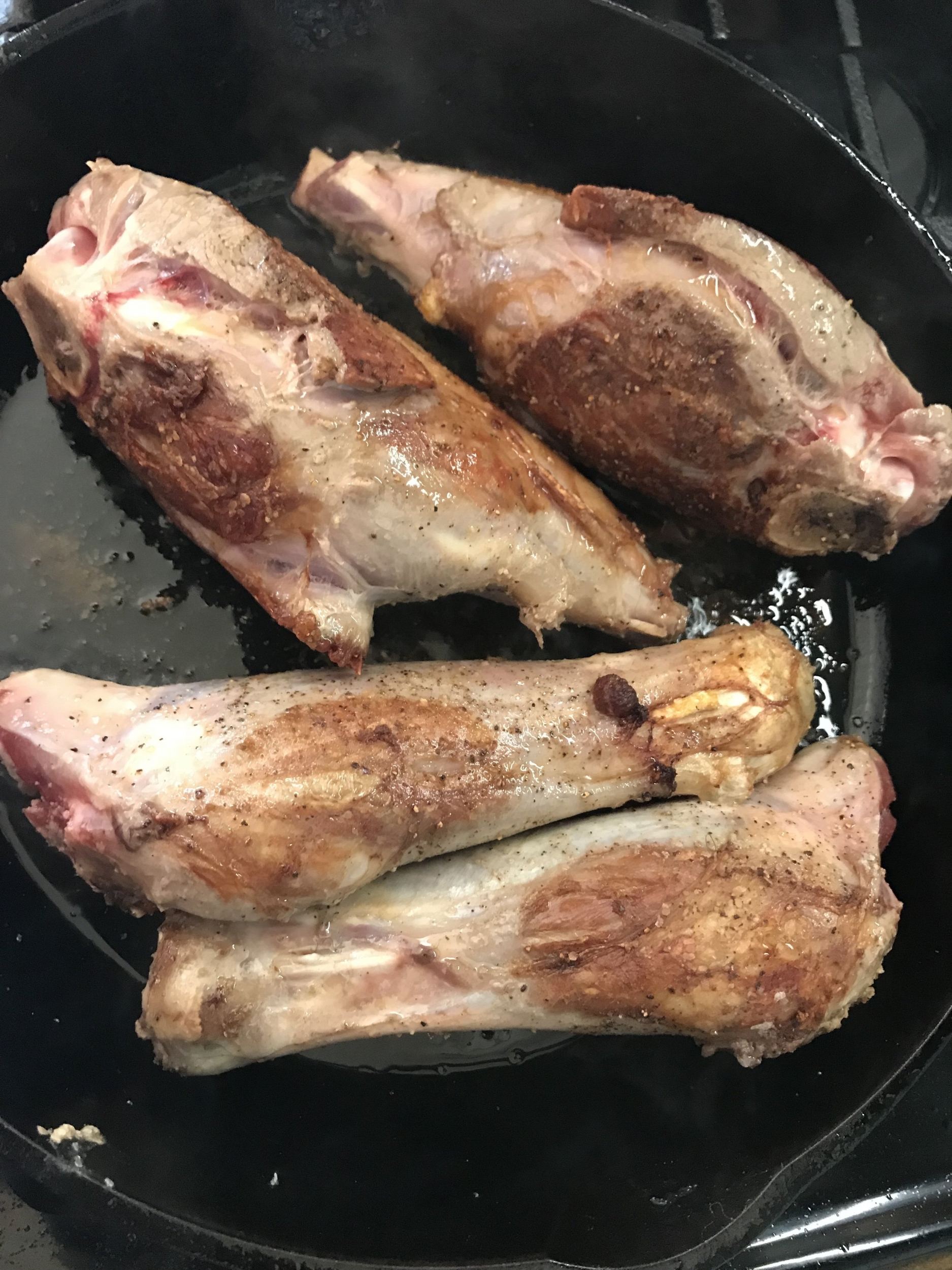
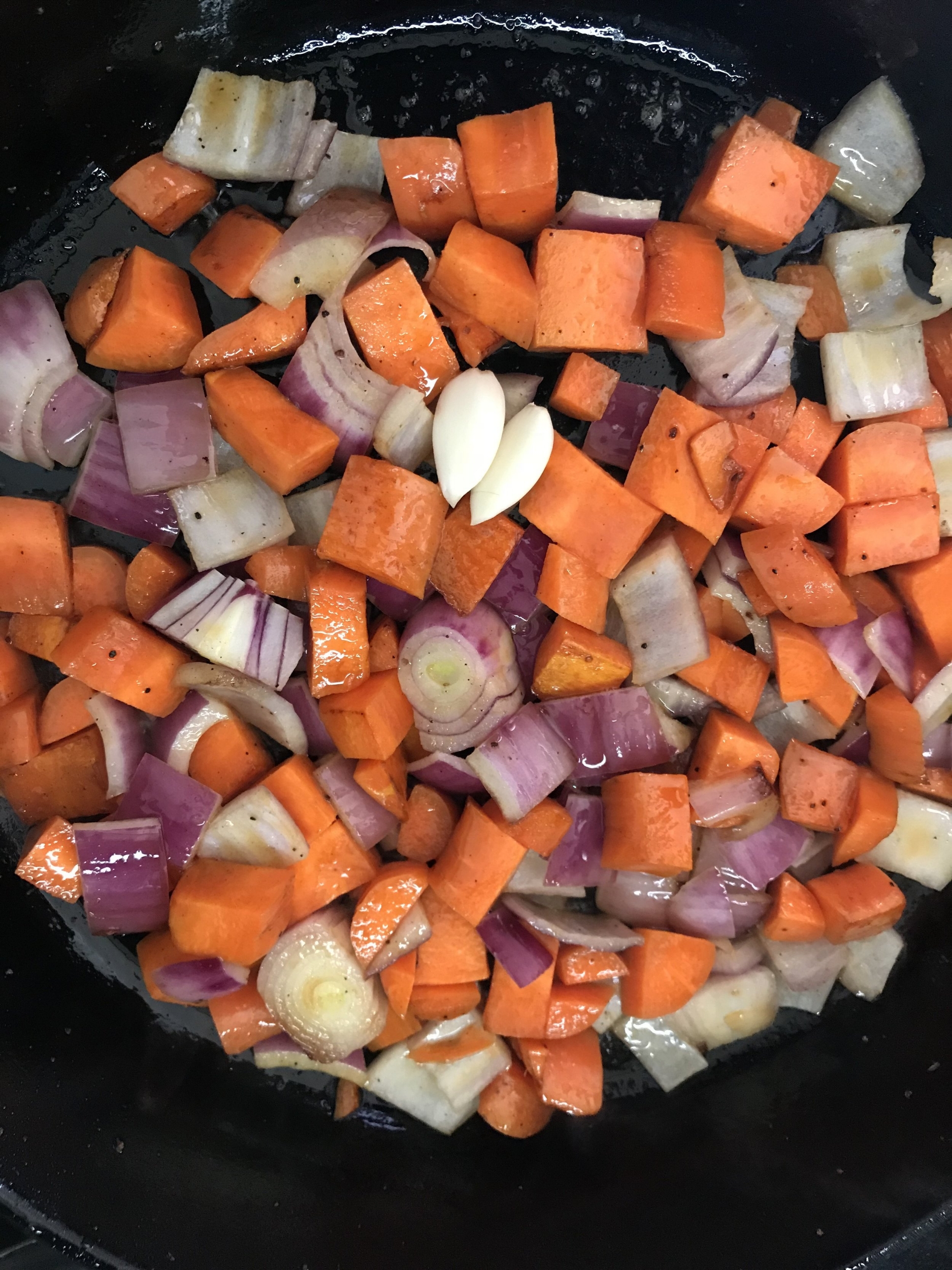
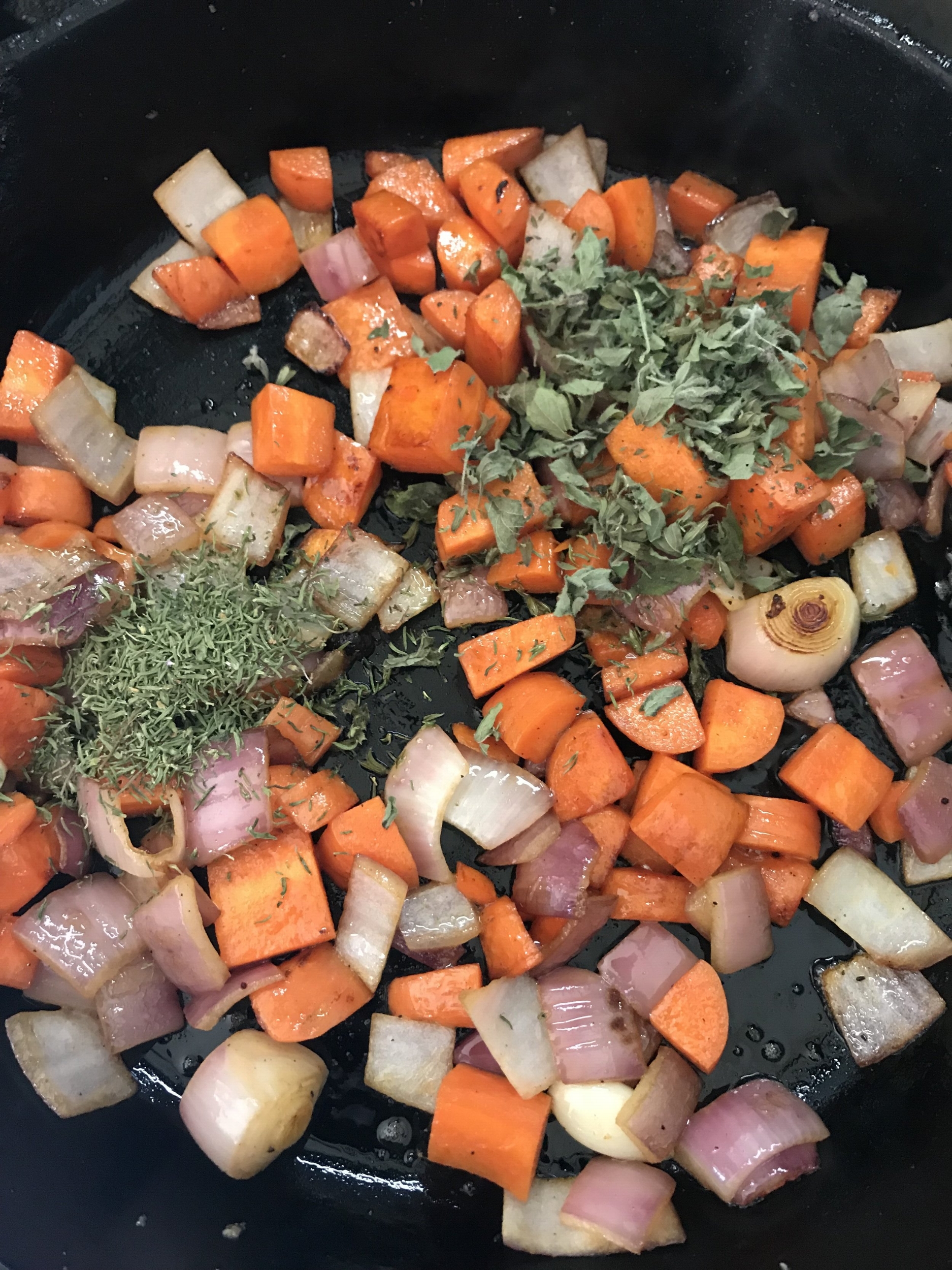
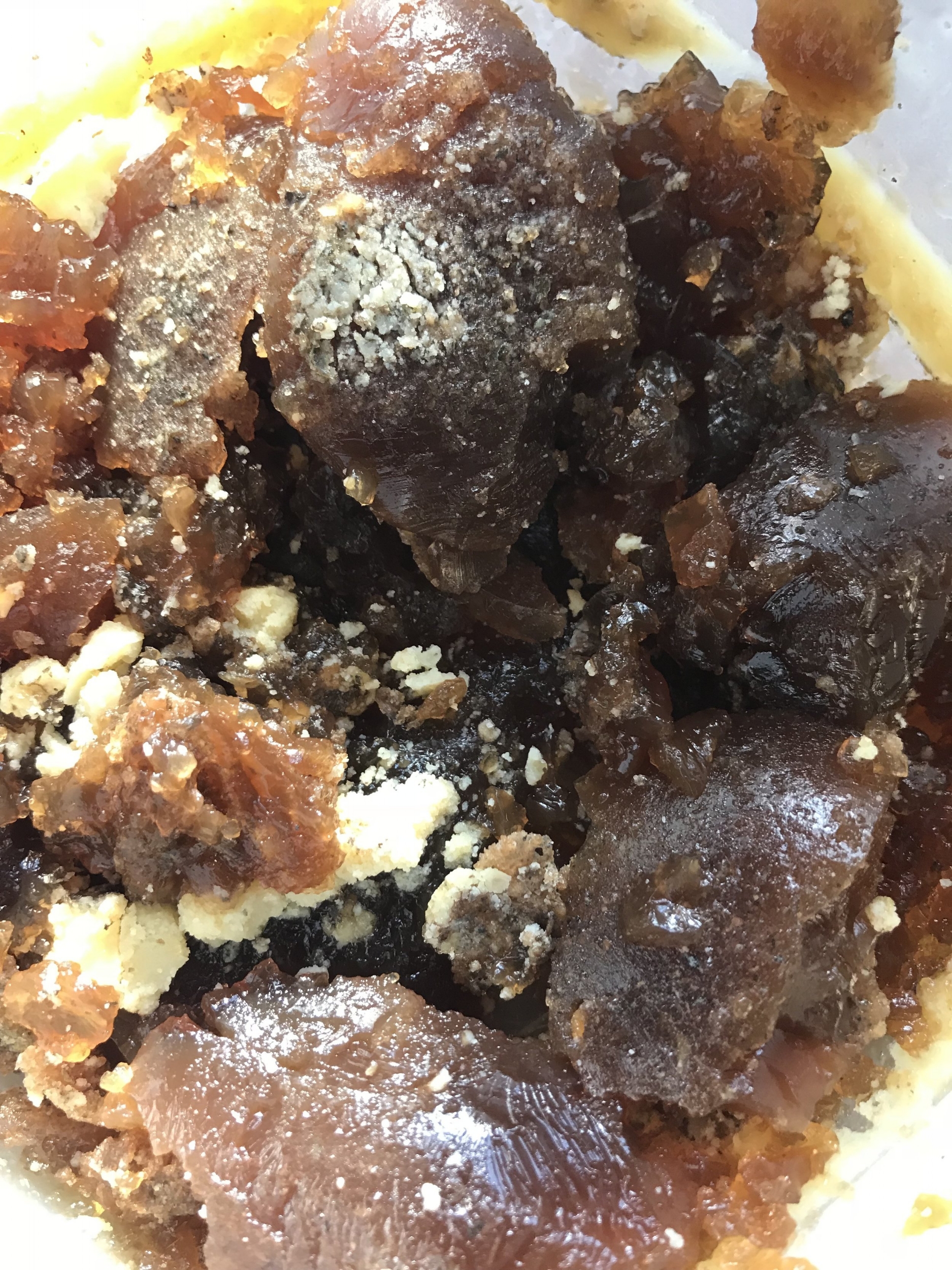
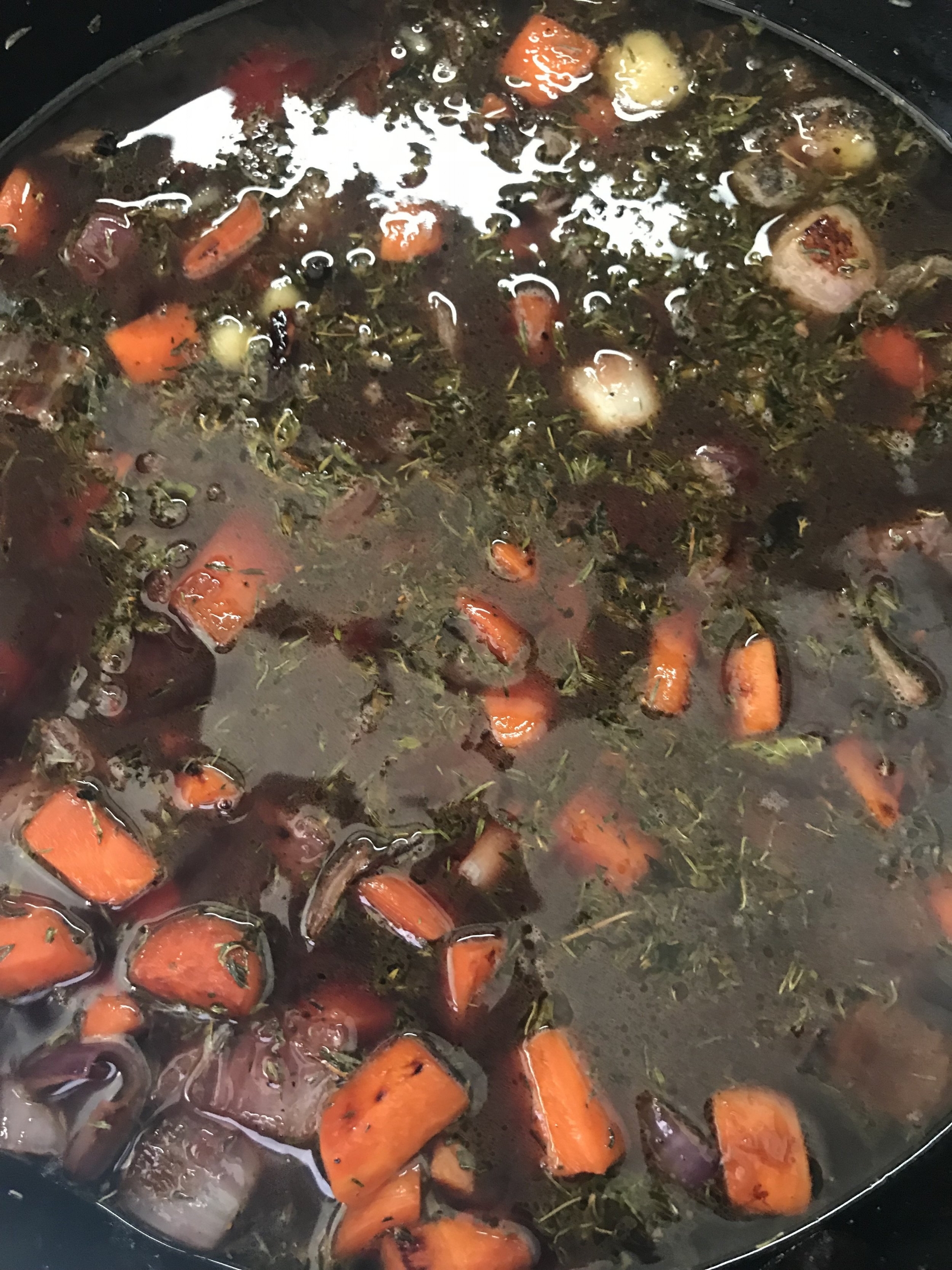
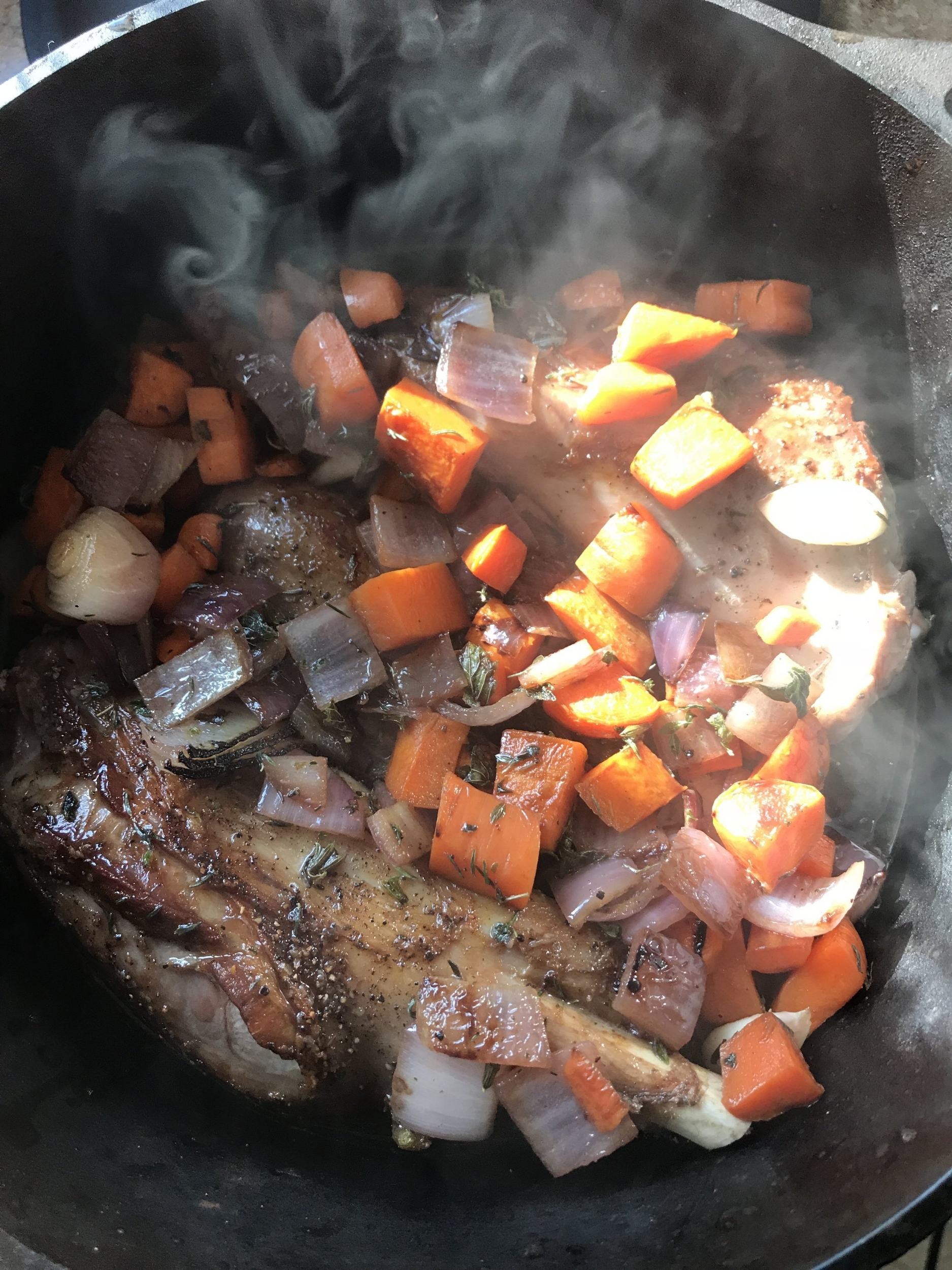
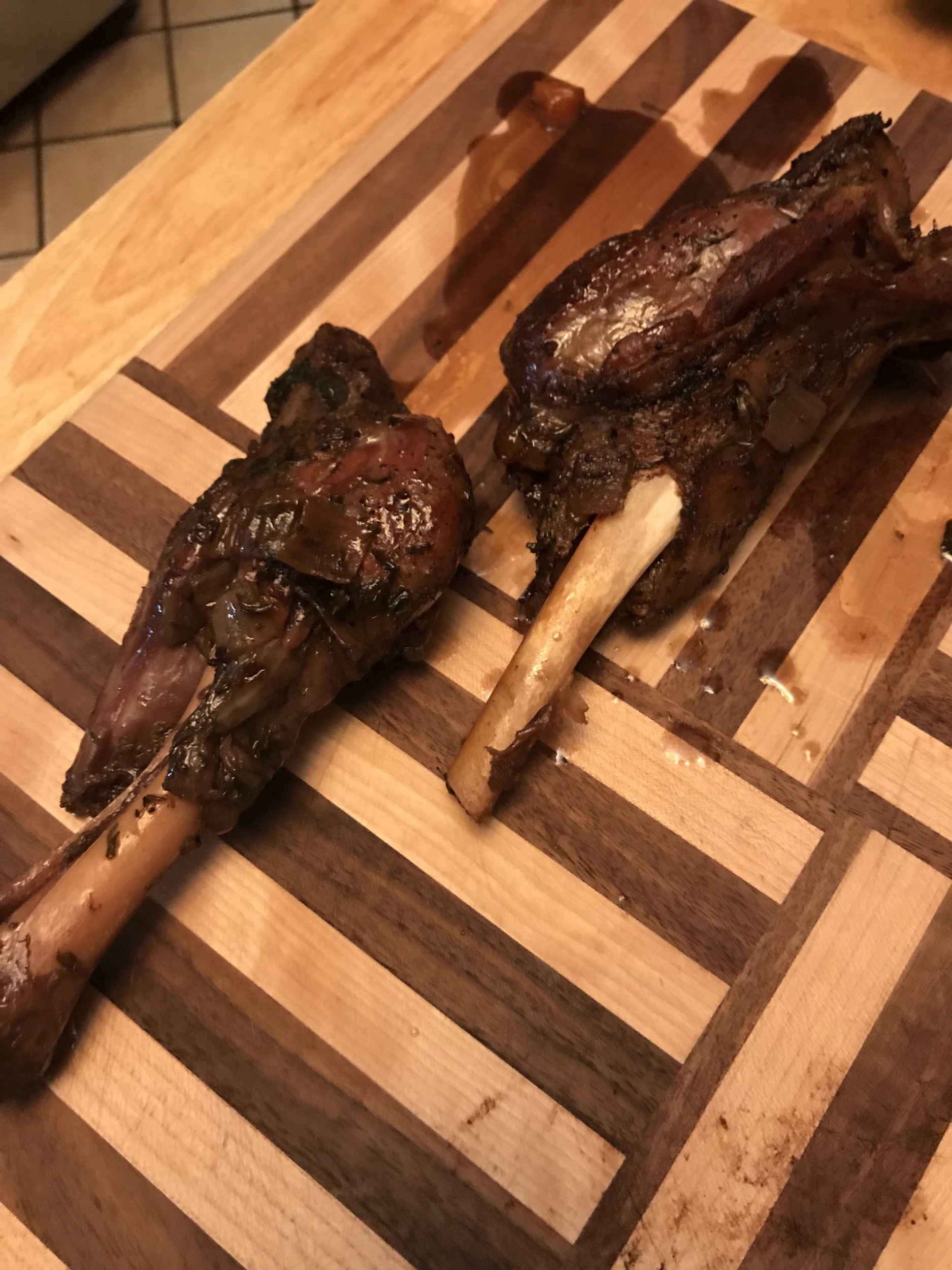
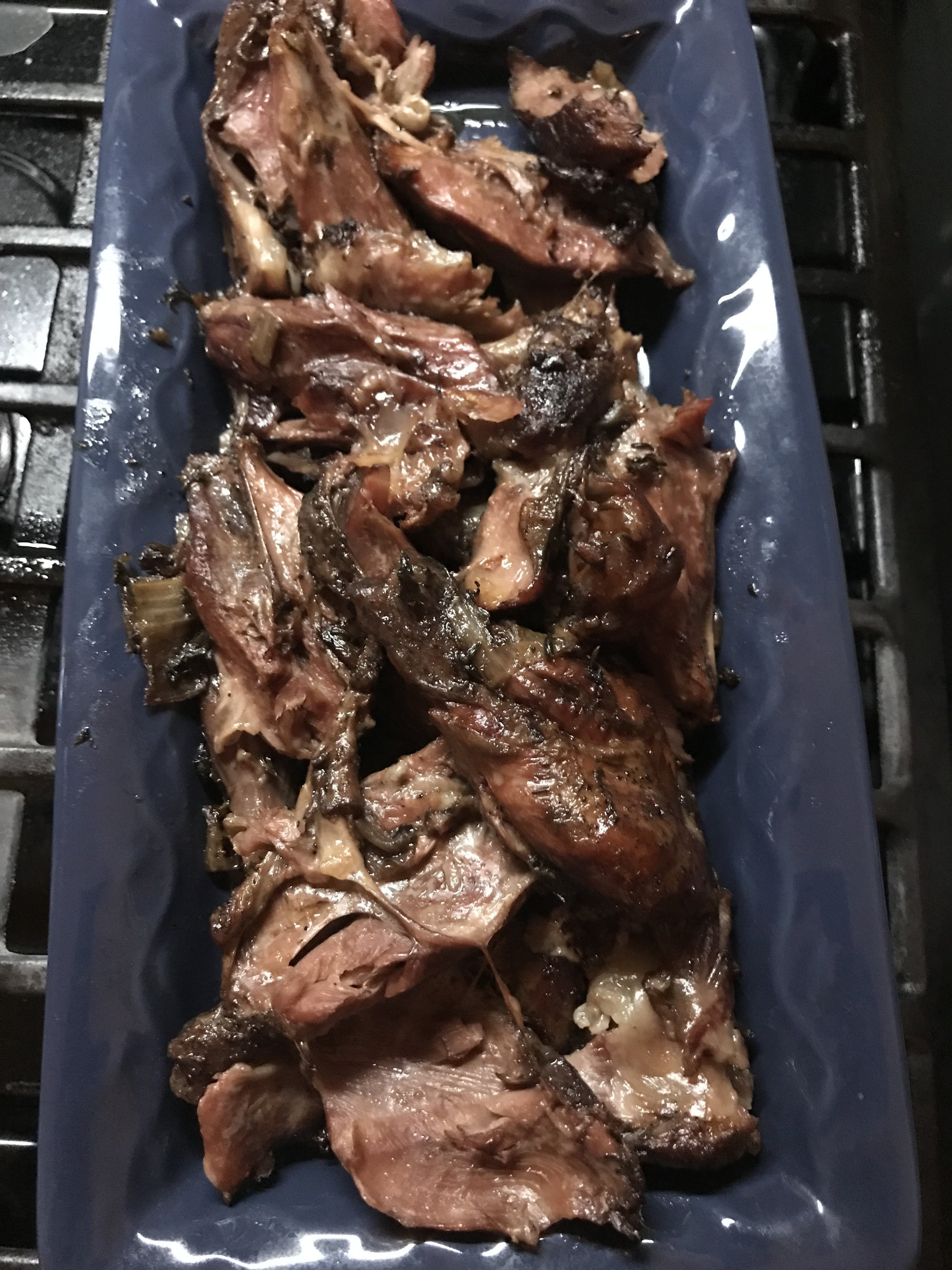
The products below are Amazon Affiliate links. If you buy through them, I receive a small commission with no added cost to you.

